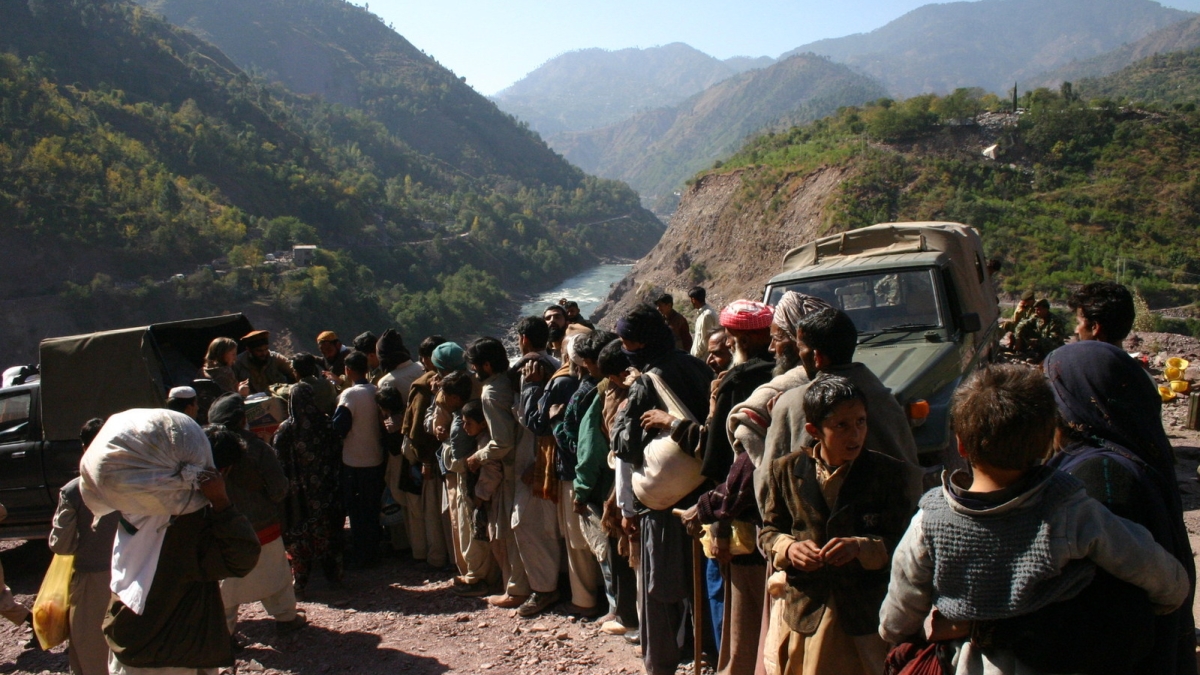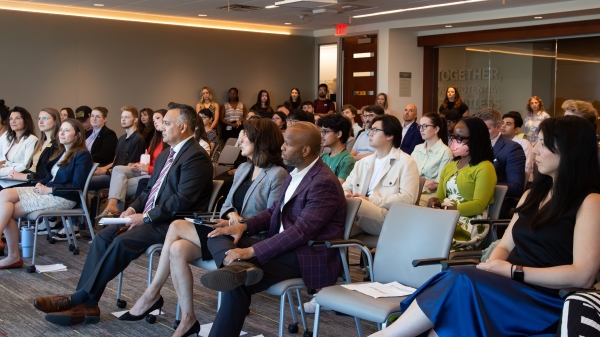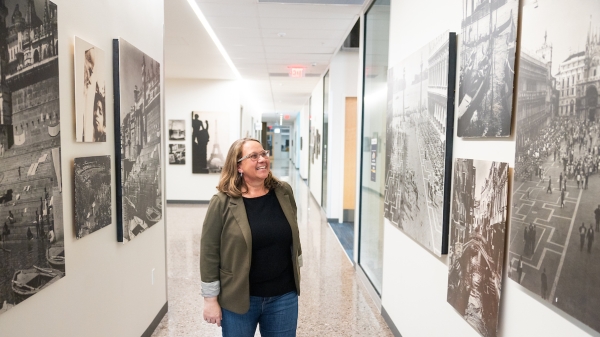As crises grow, ASU expert looks at humanitarian aid efficiency
Relief groups need more flexibility in spending, professor finds

In a tragic but common scenario, people turn on their televisions or check their phones and see news reports that another part of the world is reeling from disaster — flood, earthquake, famine or disease.
Moved by the distress, people send donations to relief organizations to help ease the suffering.
Humanitarian aid is a very complex cycle in which organizations leverage brief bursts of media attention into fundraising and then spend that money to help as many people as possible.
A W. P. Carey School of Business professor is one of the top experts in the field of humanitarian operations, and his latest paper explores the influence of media attention in how relief groups cooperate.
Mahyar Eftekhar, an assistant professor in supply-chain management at Arizona State University, said that his recent research found that newspaper and television exposure increases not only individual donations to humanitarian organizations, but also government funding as well.
Mahyar Eftekhar
“The population is growing fast, and we know that humanitarian organizations’ budgets have remained almost fixed. But the demand is sharply increasing,” Eftekhar said.
Collaboration would allow organizations to be more efficient, but their funding structure — relying on news reports to drive donations — reduces the incentive to cooperate.
“They believe, ‘If I collaborate with you, it will dilute the media attention I could receive. I want to receive all the media attention,’ ” he said.
Interestingly, the groups might be right, he said. By not cooperating, each organization still receives funding, and overall, the donation sum is likely larger than if the groups pooled their efforts.
“Efficiency is always a requirement, but we’re saying the picture is not that they’re wasting money. No one is guilty here. They could use resources more efficiently but at the same time, the fact that they work individually, raise funds individually and target different groups of individuals for donations is good for society because they can have a higher income,” said Eftekhar, who, with his co-authorsThe paper is “The Role of Media Exposure on Coordination in the Humanitarian Setting” in the journal Production and Operations Management. Eftekhar’s co-authors are Luk Van Wassenhove of INSEAD in France, as well as two W. P. Carey School of Business supply-chain management members — Hongmin Li, an associate professor, and Scott Webster, who holds the Bob Herberger Arizona Heritage Chair. The organizations they reviewed included Doctors Without Borders, the International Committee of the Red Cross and Catholic Relief Services., analyzed the financial statements of 25 big humanitarian organizations from 2000 to 2015, and the number of times the groups were cited in newspapers and other media in four languages.
The team weighed different scenarios in which groups could collaborate and what the results might be. The results showed that policymakers might consider funding based on performance and not media attention.
“But this is another problem in that the way that performance is measured is how much money the organizations spend in the field, not how much is spent effectively,” he said.
Relief groups are constrained not only by uncertainty in their funding but also their lack of budget flexibility, Eftekhar said. He is finishing up a research project that examines how groups buy and deploy large equipment such as water purifiers, power generators and trucks.
“Usually what we believe is that items like food and medicine impact human life and reduce suffering, but if you don’t have a way to distribute the items, or a power generator to run an office in the field, you can’t deliver these items to people,” he said.
“You need people who work in the field. These people aren’t all volunteers. They need salaries. They need computers and telephones.”
When there’s a disaster, most donors want to earmark their money specifically for that event rather than allowing the organization to decide how to allocate funding.
“Therefore, these organizations don’t have permission to save money, and that narrows their decisions,” he said. “If this operation needs a million dollars, why should they spend 2 million? That a waste of money. It’s better to keep it for the next disaster. Disasters always happen.”
Donors also want to avoid funding charities that have too much administration, or “overhead.” In fact, the lower the administration costs, the higher the charities are ranked, according to many indicators.
But a lack of administration can lead to waste.
“The administration job is trying to do things better,” said Eftekhar, who two years ago did a case study on a large humanitarian organization that was having inventory-management problems.
“When we interviewed them, we realized that although their job is to distribute food to people in poor countries, they don’t have a supply-chain unit. We asked why and they said that 95 percent of their budget is earmarked and only 5 percent is for administration, so they handled supply themselves.
“They pay less for administration, but do they spend the other 95 percent effectively? I don’t think so.”
Eftekhar, who is from Iran, became interested in studying humanitarian organizations because of his background.
“We have a lot of earthquakes, floods, natural disasters. And man-made disasters because we had war. We had terrorist attacks in the beginning of the revolution,” he said.
“Sometimes when I think of my childhood, it was so natural for me to have war and disaster. It was a common thing.”
His doctoral supervisor was Luk Van Wassenhove, who pioneered the study of humanitarian logistics of developmental programs in the early 2000s.
“I wanted to work with him, and combined with my personal story about the country I come from, I decided I wanted to contribute,” he said.
“This topic is very interesting because it’s not just about helping people. It’s also about advancing our knowledge of the commercial supply chain.”
More Business and entrepreneurship

How sports analytics is changing the game
Have you ever wondered why your favorite basketball team loses season after season? Or why other teams perform well? Height plays a huge role in the NBA — the average NBA player is 6 feet 6 inches…

Blackstone LaunchPad program to support student entrepreneurship skills
The Blackstone Charitable Foundation has awarded a $1 million grant to establish its signature Blackstone LaunchPad program at Arizona State University, and an additional grant to fund paid summer…

Thunderbird archives: These walls do talk
Editor’s note: This is part of a monthly series spotlighting special collections from ASU Library’s archives throughout 2024. At most universities, if you want to learn about their history, you must…